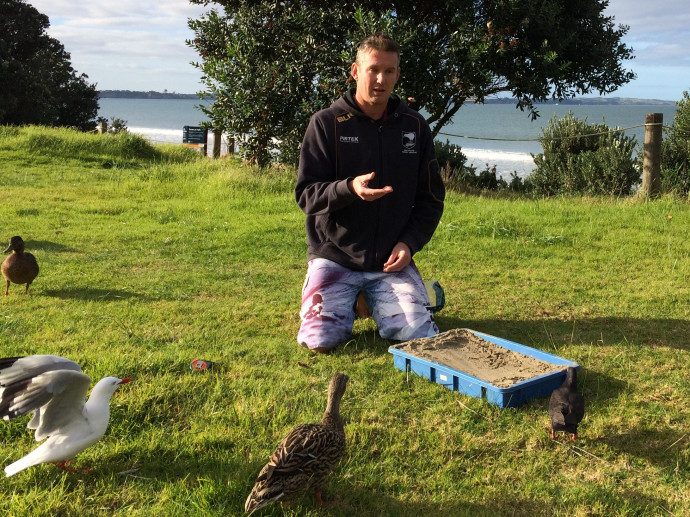Murrays Bay Intermediate – Gareth Kruyen

2016 | Behavioural ecology and conservation of native animals
School: Murrays Bay Intermediate
Host: Human-Wildlife Research group, Massey University
Region: Auckland
Murrays Bay Intermediate highly values science education as it will enable their students to participate as critical, informed, and responsible citizens in a future society in which science plays a very significant role. The school believes that science pedagogy should have a strong emphasis in the Nature of Science strand, which will help students understand the way scientific knowledge is developed and how science relates to their lives and the everyday context of the wider world. Gareth Kruyen, the Head of Department (HOD) Science will gain during phase one a firm knowledge and understanding of this strand and will also develop key leadership skills.
In 2016, through the Science Teaching Leadership Programme, Gareth was placed with the Massey University Human-Wildlife Interaction Research Group. He gained an understanding of the fitness significance of animal behaviour, the impact of people on wildlife populations and behavioural adaptation of wild animals to human modified habitats. This will enable him to more effectively teach science, in particular, from a sustainable conservation point of view. His initial focal point was developing a system of identifying local coastal birds from their footprints. His students will use and add to this classification system when observing New Zealand coastal areas. He then spent time on Tiritiri Matangi island observing and recording bell bird nesting behaviour, in particular, how they react to man-made objects near their nesting sites.
He was also involved in fieldwork researching the possible effects on bird life for the Mangawhai Harbour restoration project. This involved many areas of data collection around avian diversity and used fixed width transect bird counts and foot print surveys at salt marsh and mangrove habitats. A habitat quality (food) survey was also conducted where at each focal site, 10 samples of benthic invertebrate community were collected using 2 sampling cores. Data on diversity and abundances of potential food items of the banded rail bird was then compared between different habitat types. This information will play an important role in deciding to what extent mangrove forests can be removed from the Mangawhai Harbour.
Gareth really enjoyed exploring the Nature of Science in the animal kingdom by conducting field work in a diverse range of beautiful habitats. Collaborating with other university students and lecturers exposed him to a wealth of scientific knowledge and expertise. He is looking forward to bringing these new sets of skills and capabilities back to school in 2017. His aim is to foster students’ curiosity to learn about the amazing world around them through relevant and purposeful science experiences.
